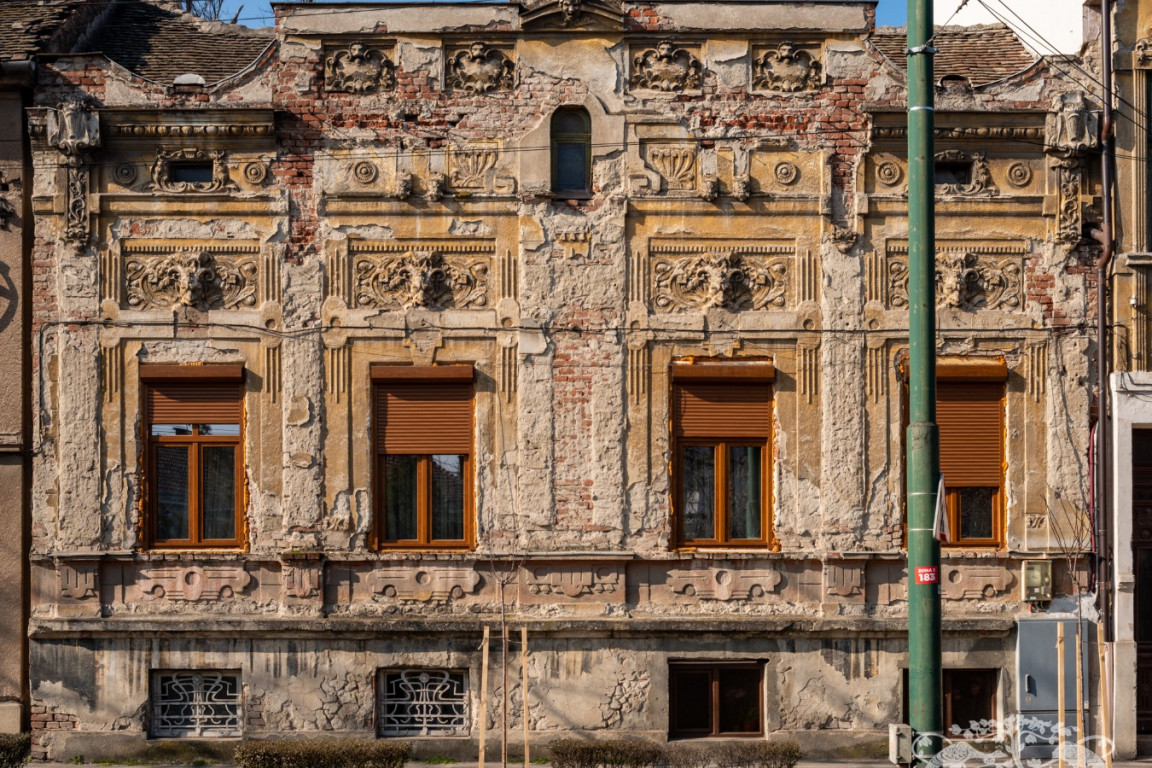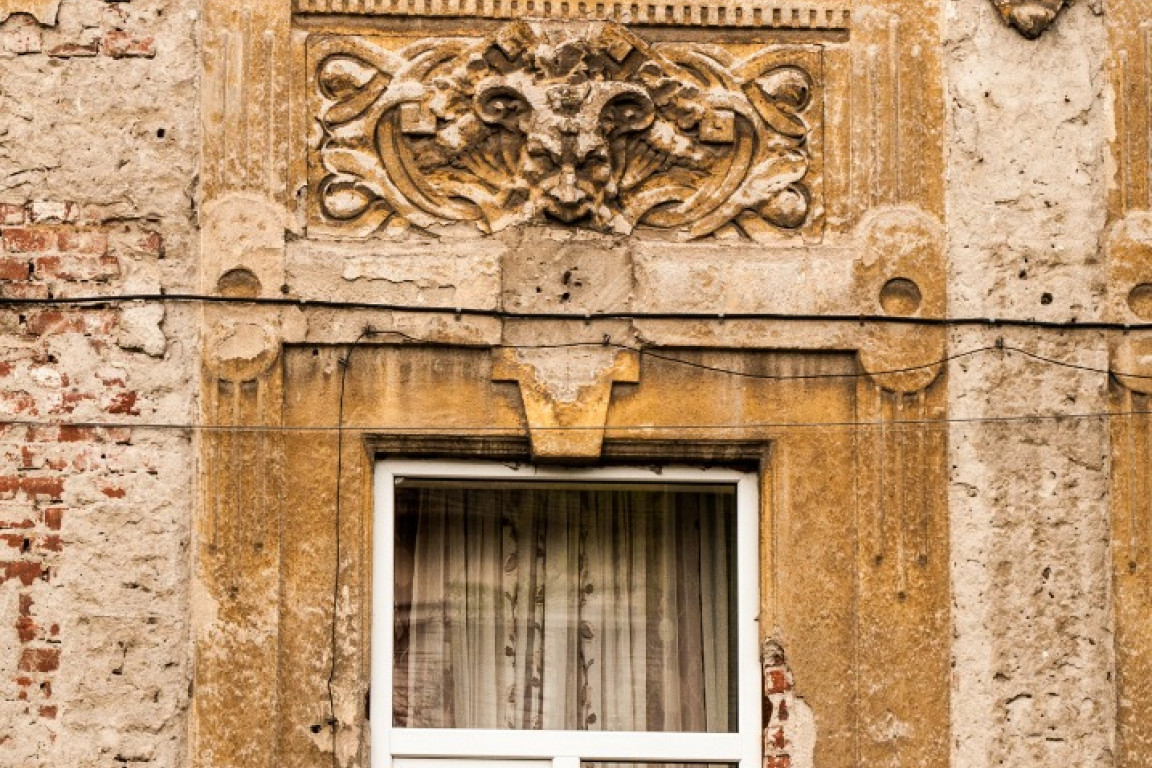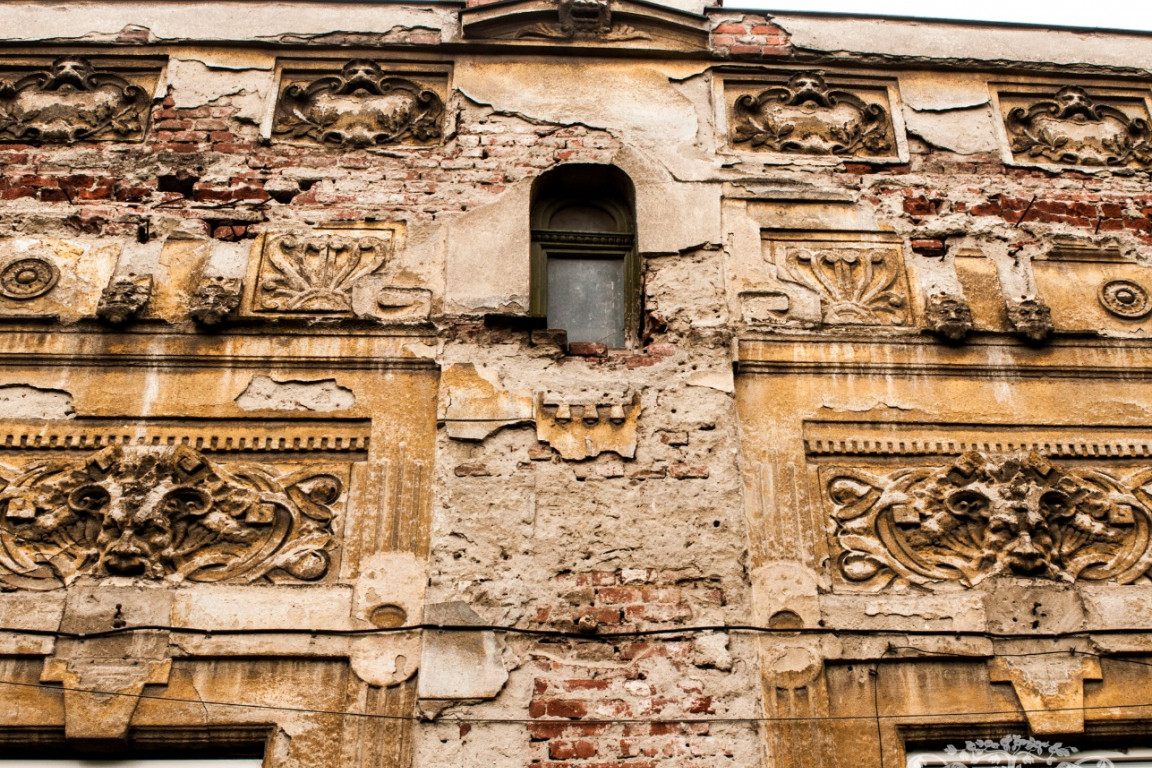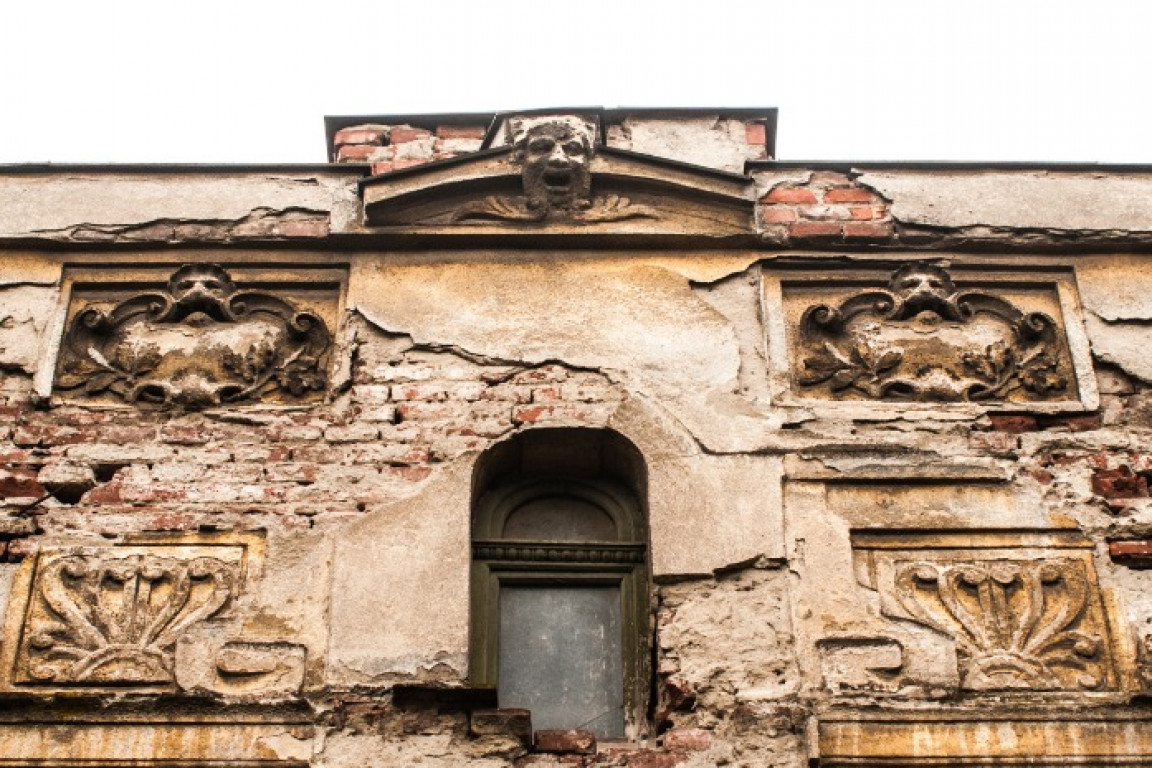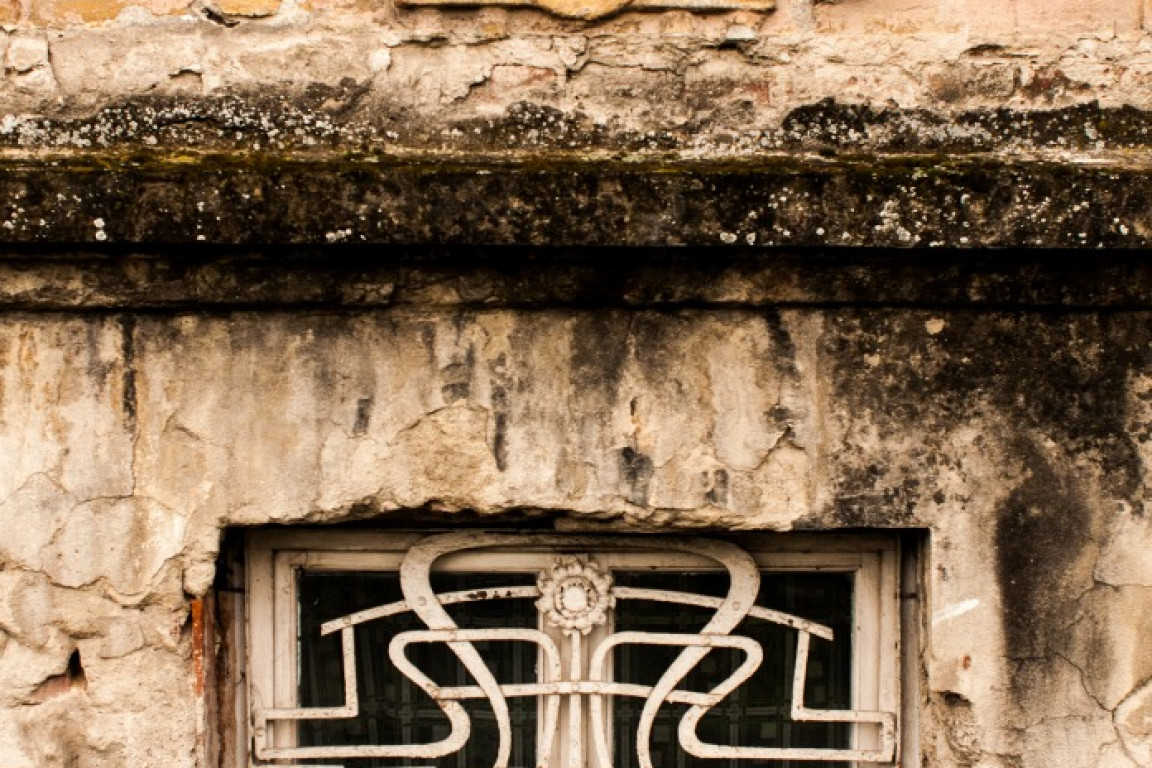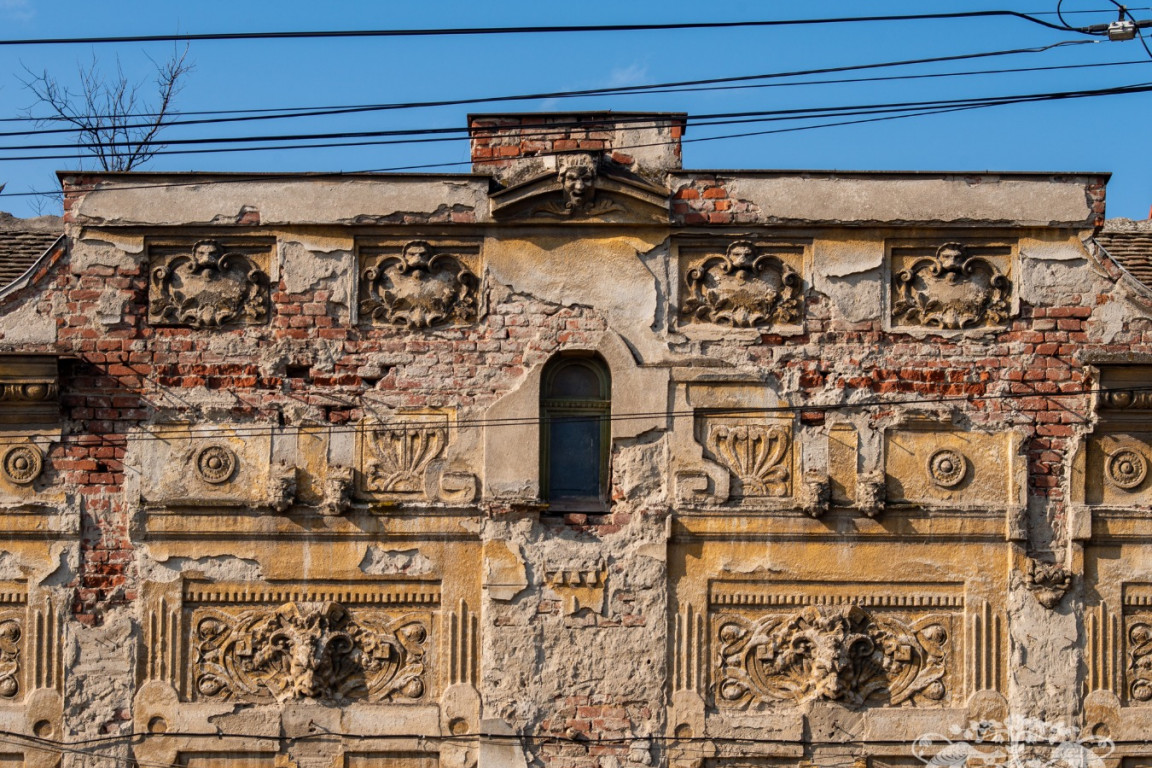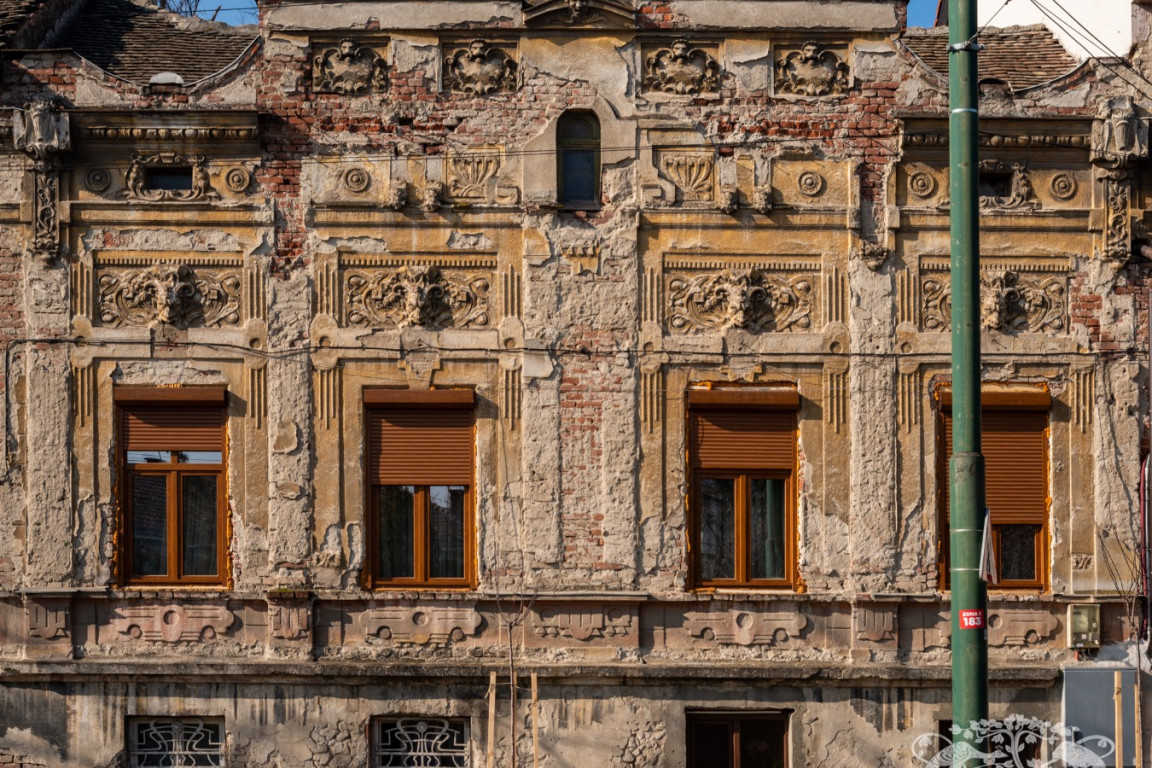In the northern part of Fabric, onwards from Badea Cârțan market (the former Hay market/ Széna tér) towards the neighbourhood’s train station, we are met by an ensemble of buildings erected in the period between the 1890s and the start of the First World War.
Our attention is especially caught by the fifth house on the western street front, a small but rich decorated building that features elaborate Secession style compositions. A particularity of the building is the fact that it doesn’t have a doorway, a mystery that is solved by delving into the building’s history.
On the 28th of April 1905, Jenő Spang, one of the cities’ famed goldsmiths, obtains an authorization to build a two story house at the junction of Indóház utca (now Mihail Kogălniceanu street) and Távirda utca (now Drăgășani street). Only two months later he gets a new authorization for the building of an extension to the house, an extension that explains the absence of a doorway and that is the main subject of this article. Both wings of the building will be completed within a year, and on the 19th of February 1906 a living authorization is issued for it.
The small resulting house, an extension of the corner building, has an extremely decorated façade. Of exceptional plasticity, it contains a plethora of representations of the Green Man motif: from panels of vegetal décor in which he is shown in a zoomorphic manner, with horns and drake-like traits, to leafy variants of small sizes and to the mascaron placed in the small central attic. There are also panels of floral ornamental motifs done in a Secession manner, rows of eggs and dentils, floral buttons and geometric compositions made out of moulded plaster.
A goldsmith by trade, Jenő Spang made himself known when he won the public auction for the restoration project of the interior décor of the city’s theatre in 1900, a project he worked on alongside the sculptor Alajos Heine. The certificate of acceptance later emitted confirms the quality of Spang’s work.
As an irony of fate, the façade of his house would soon become a simple décor itself. Far too easily removed at the end of a 115 year long “performance”, with few spectators of its demise, the entire façade was destroyed on the 5th of May 2021. Although the manifestations of the Green Man strongly defended it (the purpose of the mascarons on the façade were to drive away evil spirits, being commonly placed above the buildings’ openings – windows and doors), they were not strong enough to protect the house from the desire for modernization, sold as false progress towards comfort. With its façade scraped down to the brick layer, the house, which had a special character as part of the (legally unprotected) historical urban fabric of the area, has completely lost its identity.
We hope however that its sacrifice will not be in vain, and that the loss of one of the cities’ exceptional façades will bring the entire area the level of care and protection it truly deserves. At the moment of this article’s writing, the Heritage of Timișoara and Prin Banat Association team is working alongside local authorities to give the entire Mihail Kogălniceanu area an adequate level of legal protection.
